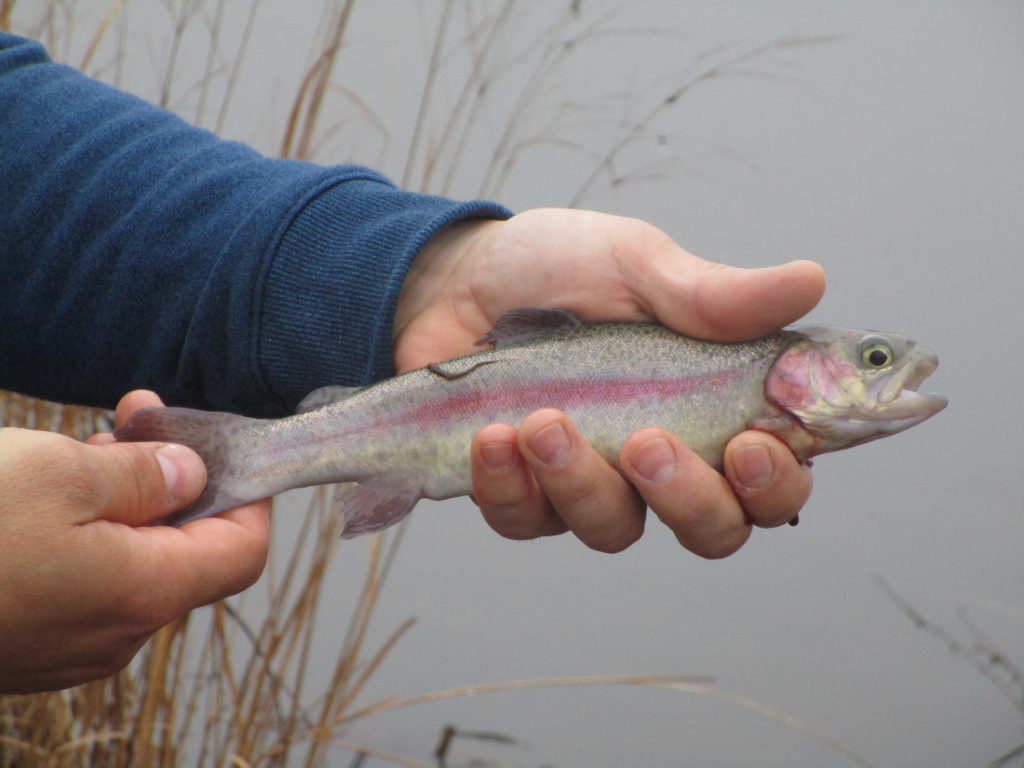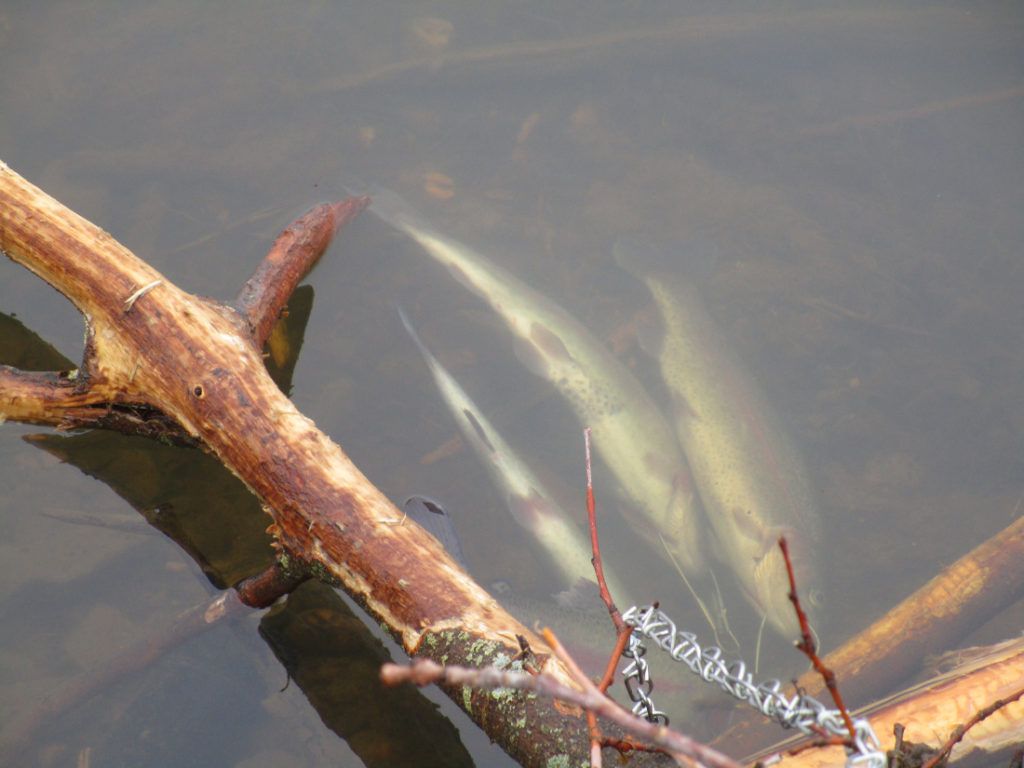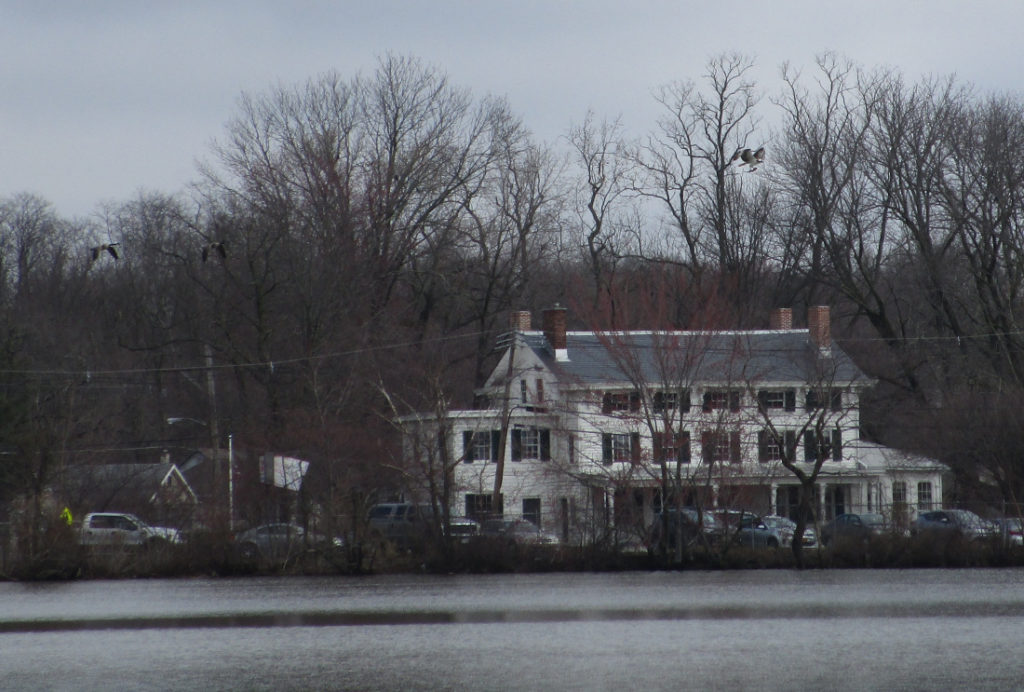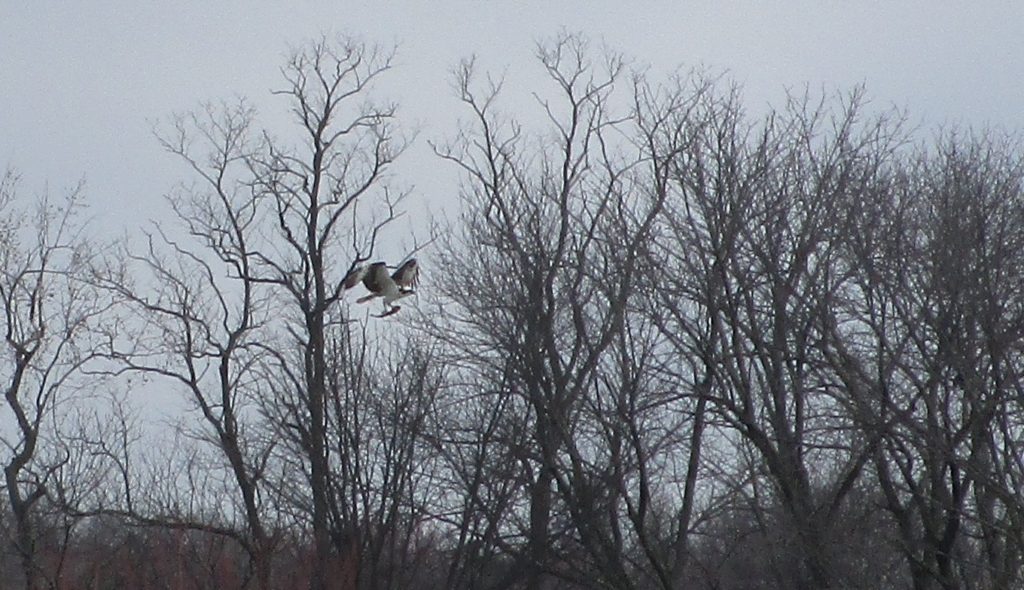Notes from Garden and Afield in the Jersey Midlands; Week of 2019, March 31 to April 6
Article and photos by Joe Sapia

A beautiful rainbow trout at “Jamesburg Lake” in Middlesex County.
TROUT FISHING ‘OPENING DAY’: New Jersey’s trout fishing “Opening Day” was Saturday, April 6. On that day, I surveryed anglers as a state Fish and Wildlife volunteer. I was at “Jamesburg Lake,” properly “Lake Manalapan” on the boundary of Jamesburg and Monroe in Middlesex County. County Parks and Recreation lists the lake as 30 acres, created by the damming of Manalapan Brook. Prior to Opening Day, NJ Fish and Wildlife released 610 rainbow trout, “Oncorhynchus mykiss,” into the lake. I interviewed about 50 anglers, who reported catching 65 rainbow trout of which 49 were kept, 7 released, and 9 unknown if kept or released. The 65 trout ranged in size from about 9 or 10 inches to about 18 inches. Anglers were allowed to keep 6 trout as long as each was 9 or more inches. Fish and Wildlife is to release 450 rainbows during each of the next three weeks. Trout fishing at the lake, which is not traditional trout water of clarity and coolness, should extend to about June. (I also volunteer for Middlesex County Parks and Recreation, so this surveying was a two for the price of one.)


OSPREY: I watched an osprey, “Pandion haliaetus,” crash into Jamesburg Lake and grab a fish in its talons. The fish was likely one of the recently stocked rainbow trout. The osprey flew off, circling the lake, carrying the fish. “Unique among North American raptors for its diet of live fish and ability to dive into water to catch them,” according to Cornell University’s “All About Birds” website. The osprey was “seriously endangered by effects of pesticides in mid-20th century; since DDT and related pesticides were banned in 1972, ospreys have made a good comeback in many parts of North America,” according to the “Audubon, Guide to North American Birds.”

Joe Sapia, 61, is a lifelong resident of Monroe — in South Middlesex County, where his maternal family settled more than 100 years ago. He is a Pine Barrens naturalist and an organic gardener of vegetables and fruit, along with zinnias and roses. He loves the Delaware River north of Trenton and Piedmont, too.
He draws inspiration on the Pine Barrens around Helmetta from his mother, Sophie Onda Sapia, who lived her whole life in these Pines, and his Polish-immigrant grandmother, Annie Poznanski Onda.
He gardens the same backyard plot as did his Grandma Annie and Italian-American father, Joe Sr. Both are inspirations for his food gardening. Ma inspires his rose gardening.
Joe is a semi-retired print journalist of almost 40 years. His work also is at
https://josephsapia.wordpress.com/ @JosephSapia on Twitter.com, along with The Jersey Midlands page on Facebook.com on the Jersey Midlands page.
Copyright 2019 by Joseph Sapia
